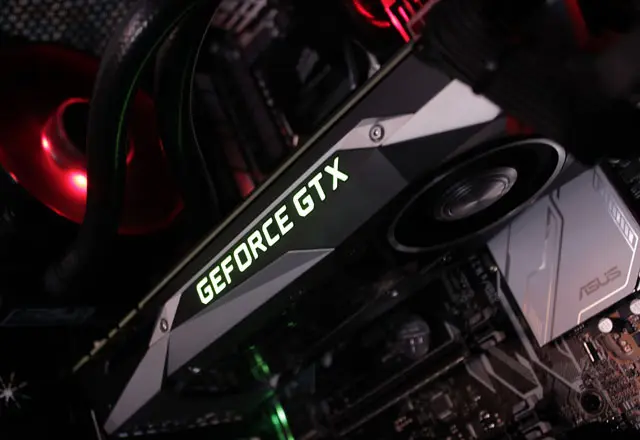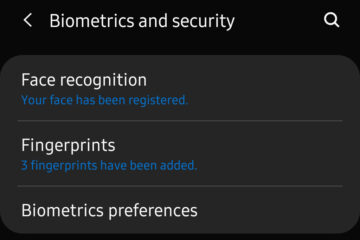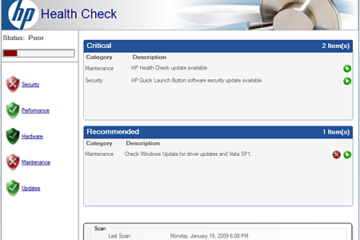There’s no doubt about it, the GPU takes an almost irreplaceable role in your rig. If you want to boost things a bit, then this could be a good start. And with this comes the need for the perfect component. You will come across many types of video cards out there. But this could only add to your confusion on which one to go for. You don’t have to make the wrong choice; however, we’ve got your back. Keep reading to learn how to choose a graphics card for your pc. Here are a few crucial things that you must know about GPUs.
Making The Right Choice
The good thing is that you will have some options to go by when selecting your next graphics card. But Nvidia and AMD are hands down the top brands to go for if you want a graphics card. The two brands are archrivals from the past, although Nvidia retains the lead. The company has a strong foothold in the market, but ADM has new graphics cards that are giving it an impressive edge too.
The market has a hoard of other brands, however, such as Gigabyte, ASUS, MSI, and more. You can also buy from these depending on your wish. Most of these companies add to the core hardware from the major industry giants – Nvidia and AMD. But if you want to know how to choose a graphics card for your pc, always consider checking out for the model. With this, you can know the exact category of the component as far as performance is concerned. So, how do you get this essential information?
Why The Model Number Counts
If you want to know how well any graphics card can deliver, then check the model number. This will give you a glimpse of all that goes into the GPU, the memory bandwidth, as well as the clock rates, and more. In most cases, the number is formatted as a brand & model number. You will see something like this, GeForce GTX 780 Ti or a similar format.
Having an overclocked card doesn’t mean beating the odds; go for a higher model if you want to squeeze the most out of your graphics card. Thus, if you are a die-hard gamer, the highest-level cards will work best for you, as long as it’s within an affordable range for you. Even then, you don’t have to spend thousands of bucks on any particular card. It’s advisable to factor in other components in your rig, as all of these rely on one another’s performance for the overall outcome.
Consider Your Monitor’s Resolution
The resolution that you are looking forward to playing for your games also matters, a lot. If your monitor delivers a high-resolution level, it will need more pixels for the rendering for every single frame. And this means more work for your graphics card. This is to mean; more high-resolution games will mean quite a beating for your card. To get around this challenge, you will thus need a more robust card to take on the job easily.
However, if you are going for low-resolution games, say 1080P, then you don’t need to spend a fortune. Most such cards out there that can handle this kind of resolution don’t necessarily cost a lot. One thing you have to think of here is the aspect of diminishing returns. This means at some point, you might end up getting less value for more spending. In most cases, the onset of diminishing returns usually comes in at around $500. At any price higher than this, the additional features might not be adding much change to the worth of the component that you are buying.
Is Paring Up The Best Option?
It’s quite normal to think of paring two cards for double the output. Luckily, the AMD and the Nvidia cards have a feature that enables linking several cards together for higher performance. This is the Radeon cards’ CrossFire, or the GeForce cards’ SLI. Sounds like a brilliant idea, right? Well, not quite, as you would think. Unless you have a multi-monitor setup (in which case such a configuration can be necessary), you don’t need more than one card.
First, the second card adds a 20% to 25% performance to the overall, rather than a double fold improvement. And if you add a third or fourth one, the advantage drops even more. Another problem with this set up is the risk of additional noise and loss of much power. Worse yet, you can run into problems like micro stuttering, inconsistencies, and incompatibilities.
Compatibility
It comes in as one of the most crucial aspects to consider when choosing your graphics card. You need to ensure that your card can work well with the rest of your rig’s components. In most cases, this comes down to two essential bits in the case of graphics cards – the power supply and case.
For the power supply, you will notice that these cards suck up the most juice. It’s thus crucial to ensure that your power supply can quench this thirsty guzzler. The best way to get it right starts with checking the recommendation for the wattage, usually on the spec sheet. With this information, get a power supply that’s robust enough to take on the task. Preferably, go for one that can deliver more than the minimum indicated level.
Memory And Bandwidth
Here are the other two essential aspects you have to consider. Going for the card with a high memory capacity doesn’t mean it will work the trick. Actually, this turns out to be one of the biggest mistakes most people make here. Getting high RAM capacity will only be important if your monitors are running on very high resolutions. For gamers playing at 1920×1080 or a higher resolution, what you need the most is a robust model.
And this comes with more memory on the tow. However, the most crucial thing to look into is the bandwidth. Yet still, the choice here could depend on the performance capability and the cost. For instance, you can consider going for 1 GB of the GDDR5 rather than opting for 4 GB of a DDR3. The memory bandwidth is of the essence here.
Have Your Decision Drawn
Understanding how to choose a graphics card for your pc isn’t for the pros. Sometimes all it takes is getting having your priorities right. Before stepping out to get your next card, consider the use you have for it. If you don’t have this essential consideration beforehand, you might end up confused about which card is for you. And you don’t have to go into details as much, mostly only the need you have for your card should be enough to guide you.
This could be deciding whether you will be using it to play games, and how intensive are the games among other factors. It’s also as crucial to factor in the budget you have set aside for the purchase. But you can keep this quite flexible to cater to the different options you might come across during your shopping. Nevertheless, it pays to have a thought out a budget in mind before hitting the market.
And that’s about all it takes to learn how to choose a graphics card for your pc. With these ideas at hand, you can step onto the market with confidence. Finding the perfect card doesn’t have to be an intimidating task. Just get your needs right, especially the uses you have for the card. Also, make sure you don’t spend too much on a card(s) that won’t give the value you pay for. So be keen on those aspects. Consider what matters the most, and go for the card that delivers the best bang for your buck. Just make sure to have the right power supply for your graphics card. Then leave the rest to the card to take your gaming to another level.
This is a guest contribution by Matt Cupper from GamingDemons. He’s passionate about gaming, fond of playing every game, and sharing ideas with other dedicated readers. Hell-bent on getting things done right and at the right time. Not a perfectionist though, don’t get it twisted. Lover of cats and all things adventure.













